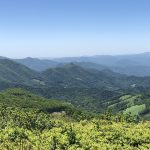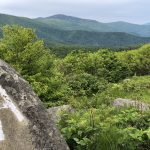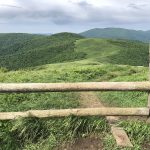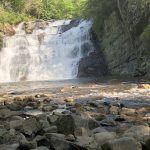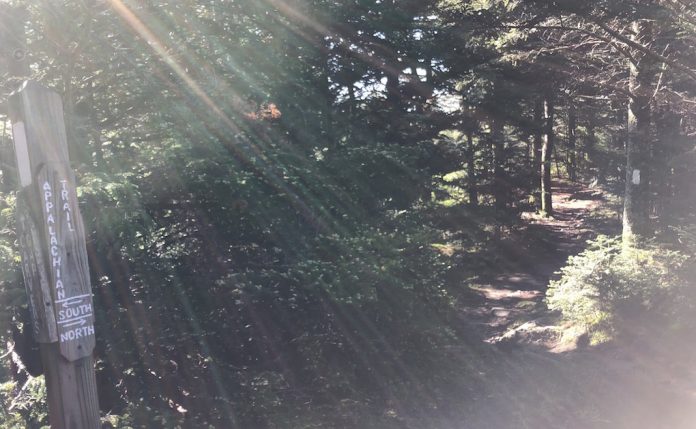
By Susan Crowell / editor@farmanddairy.com
In early June, I hiked 79 miles on the Appalachian National Scenic Trail in eastern Tennessee.
Here are the quick details: I parked my car at our end point, and my son-in-law drove my daughter and I to the Iron Mountain Gap trailhead to the south. There, the two of us crammed all the worldly belongings we would need for the next 6-1/2 days into backpacks — tent, sleeping bags, sleeping pads, food, water filters, one change of clothes — and headed north on the Appalachian Trail. By ourselves. (Scroll down to see a slide show of some of my Appalachian Trail photos.)
It was grueling, but glorious.
It’s too long of a tale to share here, but I uncovered hiking lessons that can easily be translated into farming (or life!) wisdom. Here’s the top five things I learned:
5. You can’t do it alone.
I have no idea how people tackle an extended hike by themselves. I definitely needed Annette’s companionship and motivation.
Even people who attempt a thru hike (all 2,190 miles of the AT from Georgia to Maine) typically discover a “trail family” — a person or group who hike the same speed — and often travel for days, or weeks, with this family. They look out for each other, and share food, gear and laughter with each other. In other words, they keep you going.
Farming is like hiking. It can be solitary, independent and lonely. And that’s OK some days.
But most days, we need to touch base with others, be it family or friends, to keep going.
There’s a wonderful thing on the trail (and not just the AT) called “trail magic.” People who live near a trail will park at a trailhead, or actually hike and stop somewhere along a trail, distributing water or snacks to hikers. Others will give a hiker a ride to a nearby grocery store or hostel.
It’s the type of the human kindness we often see in rural areas and farm communities.
You are never alone. Remember that.
4. Shorten your steps.

On our trek, Annette and I crisscrossed the mountains of the Cherokee and Pisgah national forests, along the North Carolina border, including Roan High Knob (6,285 feet) and Little and Big Hump Mountains (just over 5,500 feet). I’m tellin’ you, those ascents, no matter how many switchbacks, did me in.
On Day Three, we met Tuck, a 70something man who was attempting a thru hike. When we both happened to be camping at the same shelter on Day Four, I asked him how he tackled the hills.
“Just shorten your steps, Susan, until you find your stride.”
And that, folks, is good advice whenever you’re facing that uphill battle. You might not be able to make as much progress as quickly as you like, but you’re still moving forward at a steady pace. Slow and steady is OK.
3. Have a plan, but be flexible.
Once we picked the specific section of the trail we wanted to hike, we had to break it down into do-able chunks each day, and know where we intended to camp each night.
Poorly named Pond Flats was a mountain near the end of our hike. Remember how you drew mountains as a kid, like an inverted V? That’s exactly how Pond Flats looks on an elevation map.
We originally planned to camp right before the mountain and charge up the steep incline with fresh legs on our last morning. But as the week wore on, we decided we wanted to push harder on Thursday and Friday, and have just 5 miles on our final morning before getting in the car to head home.
Best decision we ever made: By hiking farther those two days, we actually made it to the Boots Off Hostel near the trail Friday night and scored the last two beds. And a shower.
2. Hike/work smarter, not harder.
Our second night, we slept in the Overmountain Shelter, one of the 250 backcountry shelters on the AT for backpackers on a first come, first served basis. There, we met Zach and Nick Gingerich, brothers from Bellefontaine, Ohio, who were attempting a thru hike.
They got the bug from their parents, who had hiked quite a chunk of the AT in the 1980s. Zach wanted to use his dad’s original backpack and gear, but after comparing the weight of the now vintage backpack with today’s gear — made of increasingly lightweight, yet durable materials — it was a no-brainer to buy a new pack. Every ounce matters on the trail.
At another shelter, we met another thru hiker attempting the trek before starting his first job out of college. He pored over a spreadsheet he found online that detailed how much food he needed to carry and where on the trail he could resupply, without shipping supplies to himself along the trail (which is what many thru hikers do). Smart cookie.
Every year hikers learn and share new tips for making the trek easier. So do farmers. Don’t keep that good info to yourself.
I’ve quoted Hoard’s Dairyman founder W.D. Hoard before, but it bears repeating. In 1885, Hoard said, “Wise old Solomon said, ‘As a man thinketh, so is he.’ He did not say as a man laboreth, so is he, and nowhere is this truer than in agriculture.”
1. Hike your own hike.
No two hikers are the same and no two farmers are the same. You can’t try to do the same thing and you can’t compare your style and practices to someone else’s. You do you.
trail sign and blaze
They call the Appalachian Trail the "green tunnel," because much of it travels through forests. (All rights reserved.)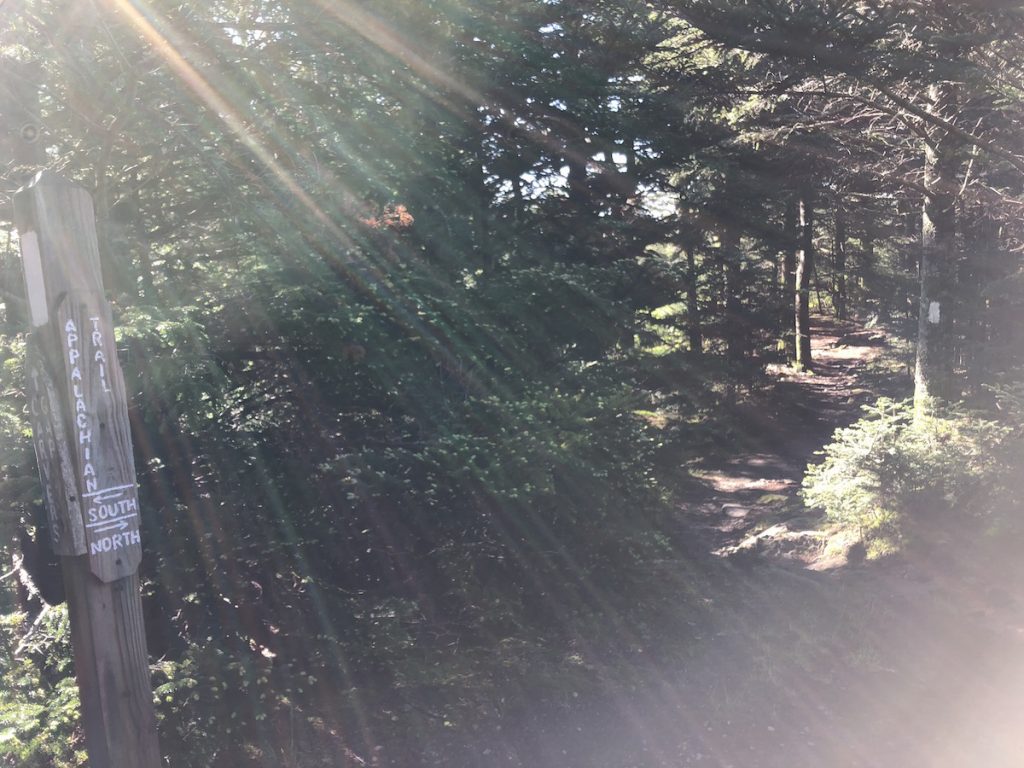
 View
View
trail sign and blaze
They call the Appalachian Trail the "green tunnel," because much of it travels through forests. (All rights reserved.)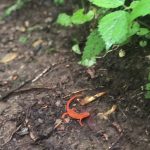 View
View
eastern newt
This tiny, bright orange Eastern Newt was everywhere during our first two days on the trail. They were so plentiful, it was almost hard not to step on them, so it was a good thing they were Tennessee orange! (All rights reserved.)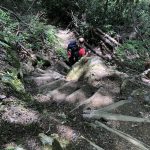 View
View
Trail steps
Parts of the Appalachian Trail are very steep, very narrow and very rocky. It is not for the weak of knees or ankles (or heart). View
View
Little Hump Mountain
Located in the Roan Highlands, Little Hump and Big Hump are both grassy balds at their summits, with Big Hump giving you 360 degree views at its top. (All rights reserved.)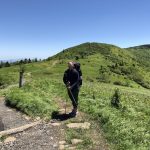 View
View
Leaving round bald
My daughter, Annette White, kept me going, even when the going kept going up. This is atop Round Bald (5,512') along the Tennessee-North Carolina border. (All rights reserved.)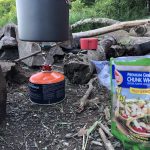 View
View
cooking dinner
For cooking, I carried a tiny MSR PocketRocket 2 stove, which weighed just 2.6 ounces, and screws onto a small fuel canister. Our meals consisted of food we could reconstitute with boiling water (think pasta and oatmeal). (All rights reserved.)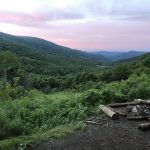 View
View
Sunrise at Overmountain Shelter
The two-story Overmountain Shelter in the Roan Highlands provides shelter to hikers on the Appalachian Trail. Originally a working barn, it was renovated in 1983 and offers a sweeping view of the mountains from the lower level sleeping platform. We watched the sun rise from the vantage point in our sleeping bags. (All rights reserved.)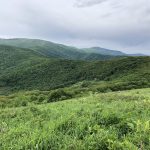 View
View
overmountain shelter from above
The little red speck in the middle is Overmountain Shelter from above. (All rights reserved.)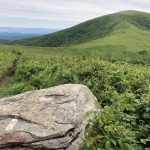 View
View
Headed to Little Hump Mt.
Just following those white blazes up a cow path. It looks gently rolling, but it got very steep. (All rights reserved.) View
View
Houston Ridge sign
According to the Southern Appalachian Highlands Conservancy, "When construction of the Appalachian Trail was first 'completed' in 1937, it was about 45% on private property..." Stanley Murray worked to secure federal protection (the National Trails System Act passed in 1968) and was instrumental in protecting thousands of acres fro development for future generations to enjoy. This plaque honors his work, and a shelter along the AT also bears his name. (All rights reserved.) View
View
Jones Falls.2
Jones Falls was the perfect site for a trailside lunch on Day Four. (All rights reserved.)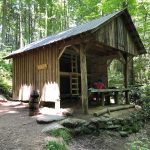 View
View
Mountaineer Falls Shelter
On our fourth night, we stayed in the Mountaineer Falls Shelter, which has three sleeping platforms. By the time night settled in, there were probably 15-20 hikers in the shelter, in hammocks (a popular sleeping choice these days) and in tents around the shelter. (All rights reserved.) View
View






